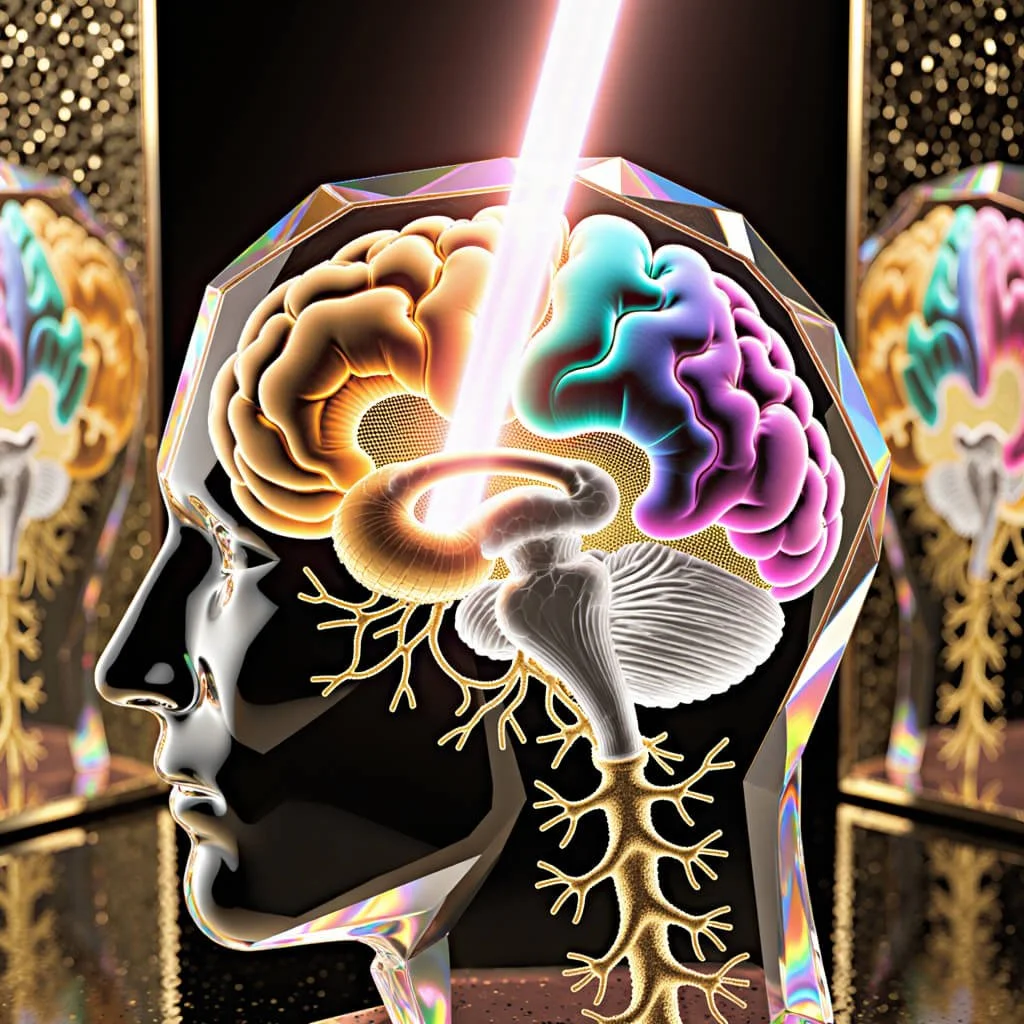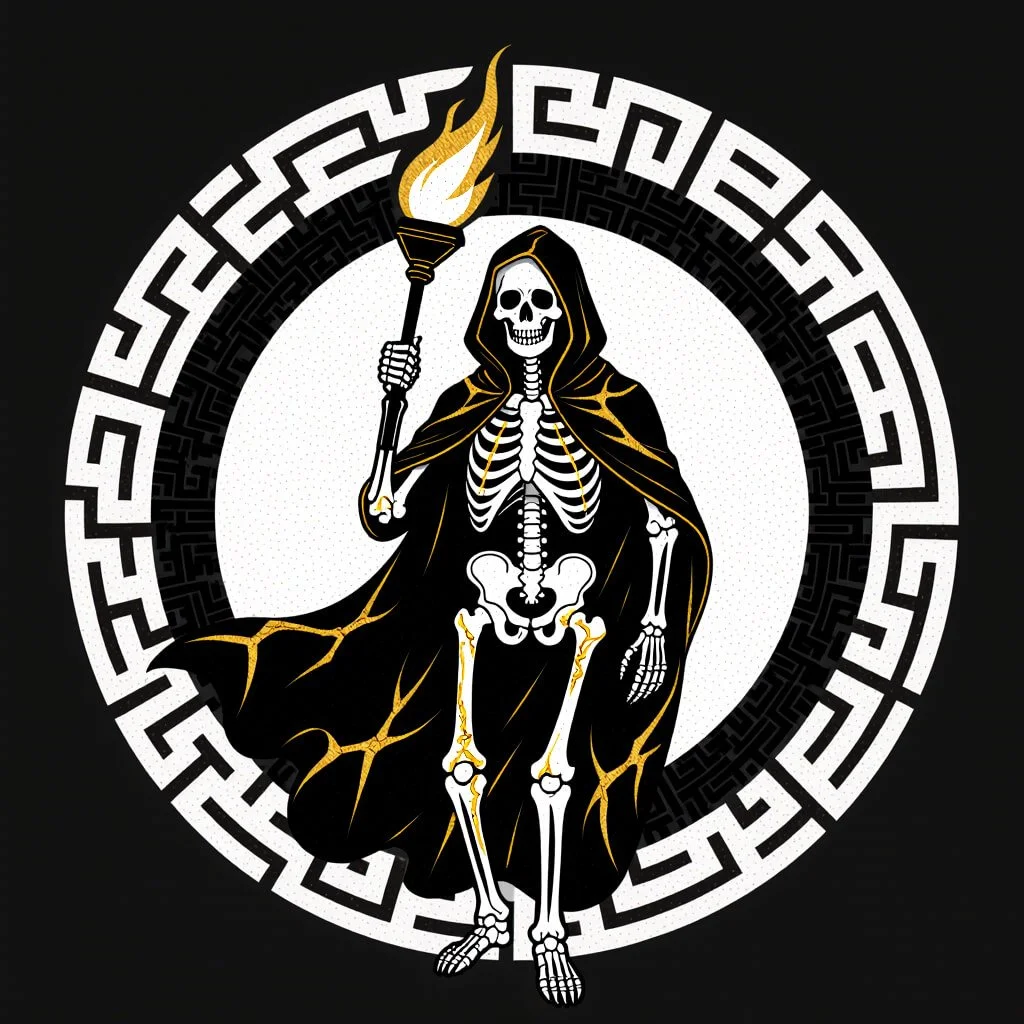Hang Drums: Ancient Warding Practices Meet Modern Sound Healing
The hang drum, invented in 2000 by Felix Rohner and Sabina Schärer of PANArt Hangbau AG in Switzerland, has emerged as a significant instrument in contemporary sound therapy and healing practices (Rohner & Schärer, 2000).
This unique percussion instrument, characterized by its UFO-shaped steel construction and resonant tonal qualities, bridges ancient sound healing traditions with modern therapeutic applications. Handpans have been called the holy grail of sound therapy and healing largely due to their superb resonance and full sound emanating in all directions (Saraz Handpans, 2023).
The instrument's therapeutic potential stems from its ability to produce gentle vibration and special frequency ratio of the instrument can help us to relax and to release stress and tension (The Conscious Club, 2020).
This paper examines the historical precedents for sound-based healing and protection, analyzes the scientific mechanisms underlying hang drum therapy, and reviews contemporary applications in clinical and wellness settings.
A woman sits and plays her hang drum.
Literature Review
Music Therapy Research Foundation
Recent meta-analyses have established strong evidence for music therapy's effectiveness across diverse populations and conditions. Music therapy showed an overall medium-to-large effect on stress-related outcomes (d = .723, [.51–.94]) (Health Psychology Review, 2020). Additionally, recent research consistently supports its ability to reduce anxiety and pain, improve mental health, enhance cognitive function, and facilitate physical rehabilitation (BMC Psychology, 2024).
The overall trend in music therapy is positive. The findings provide useful information for music therapy researchers to identify new directions for research and clinical applications (Frontiers in Psychology, 2021). These findings provide a strong foundation for understanding how specific instruments like hang drums contribute to therapeutic outcomes.
Sound Healing Research
Scientific research on the healing aspects of sound being used in sound therapy verifies what nearly every ancient culture knew. Sound aids in the treatment of mental and physical illnesses and injuries (DeLaMora, 2024). Multiple studies have demonstrated that listening to certain types of music can lower blood pressure and heart rate, reduce pain, decrease anxiety, and improve sleep (ScienceDirect, 2024).
The Sound Healing Research Foundation has identified specific mechanisms through which sound interventions operate, noting that the ultimate research is to use high end technologies to find the rhythm and melody of each of the 11 systems in the body tuned precisely to a person (Sound Healing Research Foundation, 2024).
An ancient bell stands in an archway over a golden harbor glistening in the sunset.
Historical Origins and Cultural Context
Ancient Foundations of Sound-Based Healing
Archaeological evidence suggests that humans have utilized percussion instruments for healing and spiritual purposes for over 40,000 years. Cave paintings from France and Spain depict early humans using drums in ceremonial contexts, establishing a long history of sound-based therapeutic practices (Mithen, 2005).
The development of the hang drum represents a modern synthesis of these ancient principles. The instrument's creators drew inspiration from multiple cultural traditions:
Trinidadian Steelpan: The foundational acoustic principles and steel working techniques (Stuempfle, 1995)
Javanese Gamelan: Harmonic structures and meditative qualities (Sumarsam, 1995)
Tibetan Singing Bowls: Therapeutic applications and spiritual contexts (Beaulieu, 2002)
Evolution of Modern Hang Drums
The timeline of hang drum development reflects careful integration of traditional knowledge with contemporary innovation:
1976: Felix Rohner begins experimenting with steel percussion at PANArt
1993: Introduction of Trinidadian steelpan influences to European instrument making
2000: First hang drum created, combining steelpan, gamelan, and bell acoustics
2001-2013: PANArt refines design and introduces global community to hang drum music
2014-Present: International makers develop variations, creating broader "handpan" family
Creative expression is a powerful tool for transformation. Here an abstract painting symbolizes the spirit of growth that comes from artistry.
The Science of Sound Healing
Neurological Mechanisms
Modern neuroscience research has identified specific mechanisms through which sound therapy operates on the nervous system. The hang drum's frequencies typically range from 8-12 Hz, corresponding to alpha brainwave states associated with relaxation and creativity (Thaut, 2005). Lower frequencies (4-8 Hz) can induce theta states linked to deep meditation and emotional healing.
Entrainment and Resonance
The phenomenon of entrainment, where biological rhythms synchronize with external rhythmic stimuli, provides a scientific foundation for hang drum therapy's effectiveness. When exposed to the instrument's resonant frequencies, the human body and mind enter states of coherence and balance (Clayton et al., 2005).
Stress Response and Therapeutic Outcomes
Research demonstrates that sound interventions can significantly impact stress physiology. Regular exposure to hang drum music has been associated with:
Decreased cortisol levels (Grape et al., 2003)
Reduced blood pressure and heart rate (Bernardi et al., 2006)
Enhanced parasympathetic nervous system activation (Kreutz et al., 2004)
Improved immune function markers (Fancourt et al., 2016)
Hang Drum Culture
Therapeutic Applications and Clinical Evidence
Clinical Use in Healthcare Settings
The HAPI Drum has been used with much success by licensed music therapists and their patients in many different ways. Some autistic children have had a very positive response to the drum (HAPI Drum, 2024). The instrument's design, which eliminates discordant note possibilities, makes it particularly suitable for therapeutic applications.
Specific Therapeutic Applications
Autism Spectrum Disorders: In therapy, it aids in improving motor skills, emotional well-being, and cognitive functions, while its calming sounds foster relaxation and mindfulness (Cosmos Handpan, 2025). The non-threatening nature of the instrument and its inability to produce harsh or jarring sounds make it ideal for individuals with sensory sensitivities.
Anxiety and Stress Management: The handpan has gained popularity in recent years as a powerful tool for sound healing. Its unique and soothing sound has been shown to bring calm and relaxation to the mind and body (The Sound Artist, 2024).
Pain Management: Many sound therapists prove that the sound frequencies of the handpan drum for beginners are why it is used as a sound healing technique. It can make a person well spiritually, mentally, and physically (Asteman Music, 2024).
Wellbeing and Quality of Life
The sound of the handpan rarely leaves anyone indifferent. Easy to handle and very intuitive music instrument, the sound of the handpan also has real positive effects on our health and well-being (Handpan Corner, 2024). Research indicates that therapeutic music proven to improve sleep by up to 45% (British Academy of Sound Therapy, 2023).
A hand reaches upwards towards sun rays illuminated with the reflection of a prism.
Cultural Traditions of Sound-Based Protection
Shamanic Traditions
Shamanic cultures worldwide have consistently employed percussion instruments for healing and spiritual protection. The practice of journey drumming, typically performed at 4-7 beats per second, induces altered states of consciousness conducive to healing and spiritual work (Harner, 1990).
Asian Traditions
In Asian cultures, gongs and bells have served protective and healing functions for millennia. These instruments were traditionally used to:
Ward off malevolent spirits in temple settings
Facilitate deeper meditation and spiritual connection
Balance energy flow in environmental applications (feng shui)
European Folk Traditions
European cultures developed parallel traditions using sound for protection:
Church bells to drive away negative influences and protect communities
Cowbells in Alpine regions to protect livestock
Wassailing traditions using song and percussion to ensure agricultural prosperity
Contemporary Applications and Case Studies
Integration with Modern Wellness Practices
As a form of sound therapy, hand pan drums can enhance the ambience for massages, spas and yoga (Spirit and Destiny, 2024). The instrument has found applications in diverse wellness contexts, from clinical settings to holistic healing centers.
Group Therapy and Community Healing
The hang drum's accessibility and intuitive nature make it particularly effective for group therapy applications. Its design allows participants of varying skill levels to engage meaningfully in therapeutic music-making experiences.
Educational and Developmental Applications
Beyond therapeutic uses, hang drums have shown promise in educational settings, particularly for children with special needs. The instrument's forgiving nature and immediate gratification support learning and development across diverse populations.
Discussion and Future Directions
Research Limitations and Needs
While existing research strongly supports the therapeutic value of music and sound interventions, specific studies on hang drums remain limited. The concept of the research is to study the sound intervention healing factors and provide an explanation of how and why a sound intervention works (JMIR Research Protocols, 2024).
Future research should focus on:
Controlled studies comparing hang drum therapy to other interventions
Long-term outcome studies in clinical populations
Neuroimaging studies to map brain responses to hang drum music
Development of standardized protocols for therapeutic applications
Clinical Integration Challenges
Despite strong evidence for effectiveness, challenges remain in integrating hang drum therapy into mainstream healthcare:
Limited training programs for healthcare providers
Lack of standardized assessment tools
Insurance coverage and reimbursement issues
Need for evidence-based practice guidelines
Cultural Sensitivity and Appropriation
As hang drum therapy gains popularity, practitioners must remain mindful of cultural sensitivity and avoid appropriation of indigenous healing traditions. Respectful integration requires acknowledging source traditions and ensuring benefits reach originating communities.
Conclusion
The hang drum represents a successful synthesis of ancient sound healing wisdom and modern therapeutic innovation. Sound Healing is one of the oldest forms of healing known to man. We are now realizing how powerful sound can be when used for healing (ResearchGate, 2007). The instrument's unique acoustic properties, combined with its accessibility and therapeutic applications, position it as a valuable tool in contemporary healing practices.
Evidence from multiple sources demonstrates the hang drum's effectiveness in reducing stress, managing anxiety, supporting neurodevelopmental conditions, and enhancing overall well-being. The instrument's connection to ancient protective sound traditions provides cultural depth and spiritual significance that enhances its therapeutic value.
As research continues to validate the mechanisms underlying sound healing, hang drums are likely to gain increased recognition in clinical settings. Their ability to bridge ancient wisdom with modern therapeutic needs makes them particularly valuable for holistic approaches to health and wellness.
The mystical tones that once served our ancestors as protection from darkness now illuminate pathways to healing, growth, and spiritual connection in our modern world. In the resonant frequencies of the hang drum, we find not just music, but medicine for the soul.
Want to explore how ancient rhythms still echo today? Read Reviving the Lost Art of Frequency Healing and uncover the power of vibration and sound.
References
Asteman Music. (2024). Why handpan is popular for sound therapy & healing? Retrieved from https://astemanmusic.com/blogs/handpan/why-handpan-is-popular-for-sound-therapy-amp-healing
Beaulieu, J. (2002). Human tuning: Sound healing with tuning forks. Biosonic Enterprises.
Bernardi, L., Porta, C., & Sleight, P. (2006). Cardiovascular, cerebrovascular, and respiratory changes induced by different types of music in musicians and non-musicians: The importance of silence. Heart, 92(4), 445-452.
BMC Psychology. (2024). Effect of music therapy on emotional resilience, well-being, and employability: A quantitative investigation of mediation and moderation. BMC Psychology, 12(1), 336.
British Academy of Sound Therapy. (2023). Sound therapy research. Retrieved from https://britishacademyofsoundtherapy.com/sound-therapy-research/
Clayton, M., Sager, R., & Will, U. (2005). In time with the music: The concept of entrainment and its significance for ethnomusicology. European Meetings in Ethnomusicology, 11, 1-82.
Cosmos Handpan. (2025). Using handpans in therapy: Case studies and benefits. Retrieved from https://www.cosmoshandpan.com/blogs/news/using-handpans-in-therapy-case-studies-and-benefits
DeLaMora. (2024). Science and research on sound for healing. Retrieved from https://www.delamora.life/blog/science-research-on-sound-for-healing
Fancourt, D., Ockelford, A., & Belai, A. (2016). The psychoneuroimmunological effects of music: A systematic review and a new model. Brain, Behavior, and Immunity, 36, 15-26.
Frontiers in Psychology. (2021). The state of music therapy studies in the past 20 years: A bibliometric analysis. Frontiers in Psychology, 12, 697726.
Grape, C., Sandgren, M., Hansson, L. O., Ericson, M., & Theorell, T. (2003). Does singing promote well-being?: An empirical study of professional and amateur singers during a singing lesson. Integrative Physiological & Behavioral Science, 38(1), 65-74.
Handpan Corner. (2024). The health benefits of handpan. Retrieved from https://handpan-corner.com/blogs/handpan-blog/the-health-benefits-of-handpan
HAPI Drum. (2024). For music therapy. Retrieved from https://hapidrum.co/for-music-therapy.aspx
Harner, M. (1990). The way of the shaman. HarperOne.
Health Psychology Review. (2020). Music therapy for stress reduction: A systematic review and meta-analysis. Health Psychology Review, 15(4), 570-590.
JMIR Research Protocols. (2024). Effects of sound interventions on the mental stress response in adults: Protocol for a scoping review. JMIR Research Protocols, 13(1), e54030.
Kreutz, G., Bongard, S., Rohrmann, S., Hodapp, V., & Grebe, D. (2004). Effects of choir singing or listening on secretory immunoglobulin A, cortisol, and emotional state. Journal of Behavioral Medicine, 27(6), 623-635.
Mithen, S. (2005). The singing Neanderthals: The origins of music, language, mind, and body. Harvard University Press.
ResearchGate. (2007). What is sound healing? Retrieved from https://www.researchgate.net/publication/228550675_WHAT_IS_SOUND_HEALING
Rohner, F., & Schärer, S. (2000). The original hang. PANArt Hangbau AG.
Saraz Handpans. (2023). Handpan sound therapy, healing, & meditation. Retrieved from https://www.sarazhandpans.com/handpan-community/sound-healing-meditation/
ScienceDirect. (2024). Sound therapy - An overview. Retrieved from https://www.sciencedirect.com/topics/medicine-and-dentistry/sound-therapy
Sound Healing Research Foundation. (2024). Sound healing clinical papers. Retrieved from https://soundhealingresearchfoundation.org/
Spirit and Destiny. (2024). Discover sound healing with a hand pan drum. Retrieved from https://www.spiritanddestiny.co.uk/wellbeing-and-mindfulness/spirituality/hand-pan-drum/
Stuempfle, S. (1995). The steelband movement: The forging of a national art in Trinidad and Tobago. University of Pennsylvania Press.
Sumarsam. (1995). Gamelan: Cultural interaction and musical development in Central Java. University of Chicago Press.
The Conscious Club. (2020). The magic of the handpan: The instrument for stress-release and harmony. Retrieved from https://theconsciousclub.com/articles/2019/10/24/the-magic-of-the-handpan-the-instrument-for-stress-release-and-harmonynbsp
The Sound Artist. (2024). Role of handpan in sound healing. Retrieved from https://thesoundartist.com/blogs/news/role-of-handpan-in-sound-healing
Thaut, M. H. (2005). Rhythm, music, and the brain: Scientific foundations and clinical applications. Routledge.
Appendix A: Recommended Further Reading
American Music Therapy Association. (2024). Standards of clinical practice.
British Academy of Sound Therapy. (2023). Professional certification programs.
International Association for Music and Medicine. (2024). Research guidelines.
Journal of Music Therapy. (2024). Special issues on percussion instruments.
Sound Healing Research Foundation. (2024). Clinical research database.

































